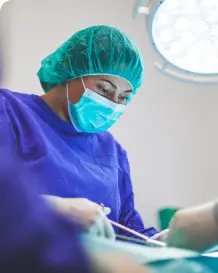Septoplasty Nose Surgery
Septoplasty refers to the surgical procedure where a deviated septum is corrected. The nasal septum is a thin wall made of bone and cartilage that separates the nasal cavity into two halves. Septoplasty is needed when this bone is... Septoplasty refers to the surgical procedure where a deviated septum is corrected. The nasal septum is a thin wall made of bone and cartilage that separates the nasal cavity into two halves. Septoplasty is needed when this bone is significantly crooked or deviated from its natural position, making it difficult to breathe. It’s a procedure that repositions and straightens the septum, allowing better airflow through the nose. It is done to improve breathing, correct sleep apnea or snoring, and alleviate nasal congestion. Recovery after a septoplasty involves mild swelling, and congestion, along with mild discomfort and pain. Read on to learn more about the procedure. Read more
Happy patients
 50+
50+
Expert surgeons
Personal Assistance










